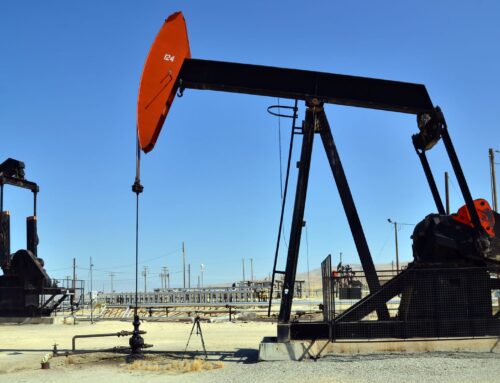Up, up, up. Prices at the pump keep breaking records. With the summer driving season upon us, it's hard to ignore the sticker shock. If it was just gasoline prices draining pocketbooks, that would be one thing. Diesel prices have also risen, to $5.54/gallon, contributing to higher prices that can be found everywhere from grocery shelves to utility bills.
Biofuels can't dodge blame.
In recent announcements, President Biden has attempted to tamp down fuel prices and inflation as a whole, not to mention impacts on the economy and consumers. In April, the Administration announced emergency summertime use of 15 percent ethanol (E15) in an attempt to "increase fuel supply and provide consumers more choices." (E15 use was historically limited during summer months due to air quality concerns.) An incremental shift from E10 (the most widely used fuel) to E15 over the short-term, however, won't solve high gas prices.
On June 3, the Environmental Protection Agency (EPA) is expected to issue a long-overdue decision on how much biofuel will be required to be blended with US gasoline and diesel for 2020-2022. No, that's not a typo! The EPA will tell fuel blenders how much biofuel they should have used in years past, plus the first part of 2022. The Renewable Volume Obligations (RVOs), as they're called, were due Nov. 30 of last year. Importantly, they impact fuel prices.
The delayed RVOs are tied to the overarching Renewable Fuel Standard (RFS). When Congress enacted the federal biofuels mandate, nearly 6 in 10 gallons were expected to be derived from so-called "advanced biofuels" by 2022. Congress's intent was for cellulosic biofuels, produced from perennial grasses and crop residues like corn cobs, to make up a hefty portion of the RFS, with food-based biofuels like corn ethanol and soy biodiesel making up an increasingly smaller share of the mandate over time. Greenhouse gas (GHG) emissions were supposed to decline, with minimal impacts on food prices.
A silver bullet to solve climate change, if you will.
Right?
Wrong.
The silver bullet is a gold-plated dud that failed to benefit the climate, increased crop/food and fuel prices, and caused other long-term liabilities.
That's primarily because low production of cellulosic biofuels has meant nearly three-fourths of the RFS will likely be met with first-generation corn ethanol in 2022, and corn ethanol is far from being a climate savior. Congress didn't foresee this happening, but it's reality and something EPA is forced to deal with every year when actual cellulosic biofuels production is significantly lower than Congressional mandates.
Through its annual volume announcements, EPA waives overall RFS mandates down as a result of lower-than-expected production. This year, biofuels consumption will likely be around 20 billion gallons instead of the 36 billion gallons Congress once envisioned. For math nerds out there, does that mean the RFS failed by 40 percent?
The answer is complicated, but there's no doubt taxpayers get stuck multiple times over. The biodiesel and renewable diesel industries also receive a $3-4 billion annual tax break. The expensive cocktail of market-distorting tax credits, federal mandates, and other taxpayer subsidies leads to higher biodiesel production than would otherwise occur without government intervention.
Adding salt to the wound, soy-oil biodiesel and renewable diesel is actually more expensive than fossil-based diesel fuel. Even EPA admits consumers pay more filling up with these fuels (usually in blends of B2, B5, and B20, in the case of biodiesel):
"Since 2010, biodiesel and renewable diesel prices have consistently been far higher than the price of petroleum-based diesel, even after accounting for the $1 per gallon federal tax credit."
There you have it. More pain at the pump plus $3-4 billion in special interest tax breaks – each year. The Congressional Budget Office (CBO) also found that some biodiesel – derived from waste oils and animal fats – would be economical on its own, solidifying taxpayer waste.
Unfortunately for taxpayers, this isn't likely to change anytime soon unless Congress allows the biodiesel tax credit to expire on Dec. 31. If the RFS and tax credits are allowed to continue artificially propping up production, however, economists predict the soy oil biofuels boom could mirror the corn ethanol boom. Using so much corn for biofuels over the past few decades contributed to increased commodity prices and led to the loss of millions of acres of carbon-rich wetlands, grasslands, and forests. Planned expansion of the soy biofuels industry is expected to impact similar landscapes, not only in the US but also internationally.
Instead of increasing subsidies and mandates for food-based biofuels that do more harm than good, policymakers should zero in on real climate solutions. Energy efficiency and effective agricultural conservation measures are a few to start. Lessons learned from the past can inform future climate, energy, and transportation policies so costly mistakes aren't repeated.










